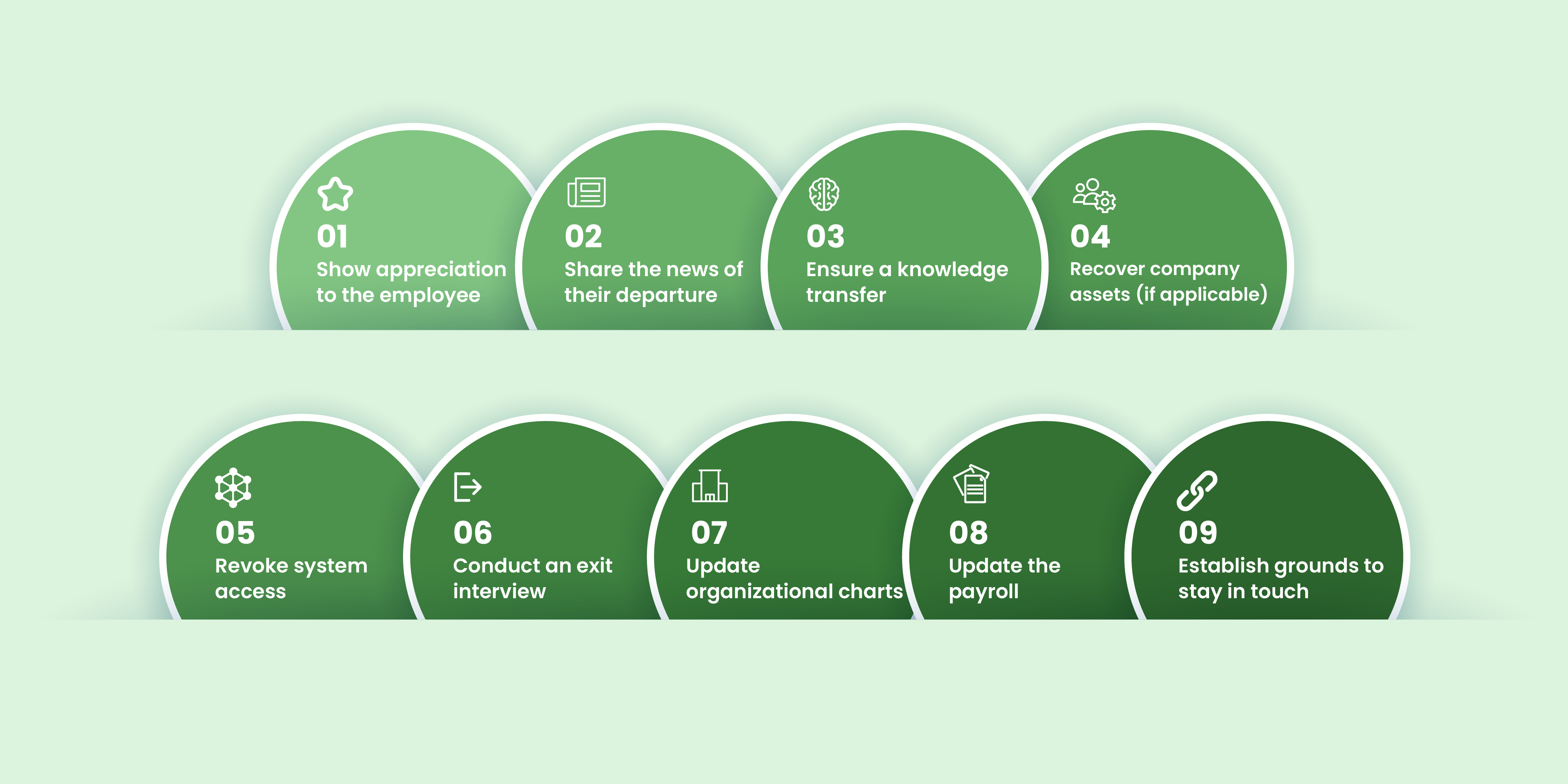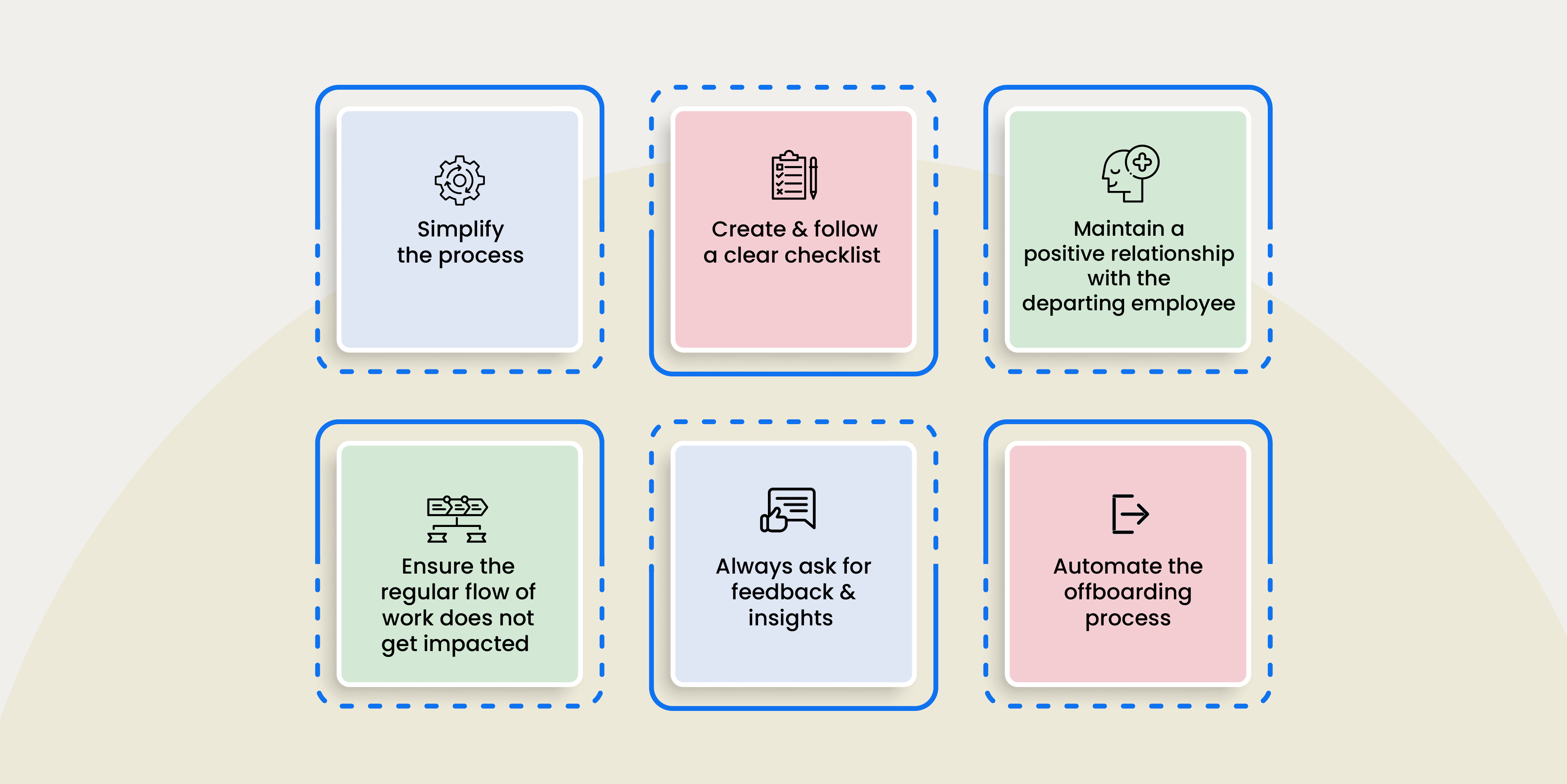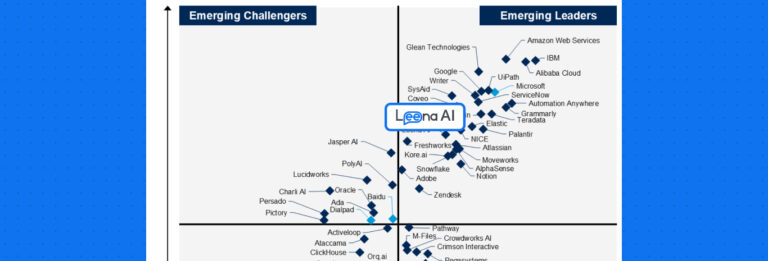The employee offboarding process is an important aspect of the employee lifecycle. An employee leaving the organization should always be viewed as a significant disruption and should be dealt with according to preset employee offboarding best practices. More than half the employees that leave, take away valuable information with them. From technical knowledge to organizational image, they walk away with a priceless experience that defines their view of the company. Therefore, there is a need for strict adherence to employee offboarding best practices and a streamlined employee offboarding policy.
While NDAs and exit documentation processes are essential parts of the employee offboarding process, employees need to be provided with a seamless experience. Even if the data is secure and compliance requirements are met, without a proper employee offboarding process the employee will have a bitter aftertaste of the organization. And after they leave, what they have to say about the organization is not controllable. That is where employee offboarding policy comes into play, to cover all grounds and ensure no dead ends remain.
In this article, we explain the employee offboarding process and employee offboarding tips and highlight the reason for it becoming a key aspect of the employee lifecycle.
What Are the Key Employee Offboarding Best Practices to be Followed?
An employee offboarding process includes the formal separation between an employee and an organization through resignation, termination, or in some cases, retirement. Streamlining it ensures one of the best employee offboarding experiences. It includes all the touchpoints that take place before an employee leaves, typically including, but not limited to the following points:
- Knowledge transfer to the person taking over their job responsibilities
- Processing outstanding expenses, dues, and remuneration
- Reviewing departure policies and NDAs
- Deactivating access rights and passwords of the employee accounts
- Turning in the equipment that may belong to the organization
- Hosting a send-off party for the employee
- Conducting exit interviews to gather employee feedback

Why Does Employee Offboarding Matter?
Best employee offboarding experiences depend on how HRs approach the interaction before the exit of the employee. Given below are the key perspectives on how to approach the employee offboarding process. Each has its own significance and should be a key focus of the employee offboarding policy.
-
Former employees are brand ambassadors
While an employee may have had many moments of joy at the organization and promising growth as well, an exit experience that left them feeling helpless, overwhelmed, or confused may overshadow it all. Eventually, their experience during exit becomes what they talk about the most.
This is why it is important to streamline the exit process and deliver one of the best employee offboarding experiences to end relationships on a positive note. This ensures that when they walk out, they only have the best things to talk about the company and become an ambassador for the organization.
-
Leaving employees may also be your future hires
Several people make career moves for different reasons. While some may leave due to the lack of growth opportunities, others may consider another role simply because the location doesn’t suit them anymore and remote working isn’t a possibility. This only goes to show that not all employees leaving is because someone does not like the company or its culture.
It has been seen that employees often come back to the organization they started with after a certain period. But this decision occurs only if they left the company on a positive note.
-
Past employees may even become your customers
If the outgoing employee shares their experience and capabilities with the new organization, it is an opportune moment to create a lasting customer.
However, this is possible only if their exit experience was frictionless and they walked away with a positive experience. That positive experience will factor into their decision when they talk from their new organization’s standpoint.
-
Former employees can be a security threat
According to a survey, around 20% of organizations state that they have experienced data breaches from former employees. That’s why one of the most important reasons to have a proper employee offboarding process in place is security.
Imagine an ex-employee who is joining a similar organization or company, walking away with a customer list with all contact details. This jeopardizes all the efforts poured in over the several months.
An automated employee offboarding process is an effective way to avoid data leaks or data deletion (that often occurs in a fit of rage or desperation). The software helps revoke access to company systems and networks right after an employee exits, leaving no loopholes.
-
Compliance and regulations
Depending upon the industry, the employee and the organization are required to meet certain guidelines and regulations. These regulations govern the activities before leaving the organization and sometimes after. It is always difficult to complete these processes after they exit the organization. It becomes crucial to make sure there are no loose ends before the final sign-off.
An AI-powered employee offboarding process can ensure compliance activities and the surety of one of the best employee offboarding experiences. Through well-designed intimation points and reminders, the employee and the HR team is fully-updated about each point of the process.
How to Manage Employee Offboarding
How you offboard an employee may differ from industry to industry. But here are a few pillar actions that everyone should follow to deliver one of the best employee offboarding experiences:
1. Thank the employee
If an employee is moving to a new role in a different organization, congratulate him/her. If the employee is leaving for another reason, use this opportunity to thank them for all the work they have done so far. It makes for a good start towards the end.
2. Share the news of their departure
It might seem like a good idea to hold off on communicating about an employee’s departure. But doing so may just result in people trying to fill in the information gaps, leading to gossip, rumors, and assumptions. This is why team managers need to notify every stakeholder almost as immediately after the departure is confirmed according to the preset employee offboarding policy. A generic announcement that promises details later will suffice.
3. Ensure proper knowledge transfer
Even if a new employee has filled in the role of the existing one, it is important to ensure complete knowledge transfer before the final day. The idea is to ensure that the leaving employee’s knowledge stays within the organization while delivering one of the best employee offboarding experiences. Depending on the role they were in or what goals were they in charge of, this can include sharing specifics like:
- Overview of their day-to-day routine
- List of priority tasks
- Access to all the systems they use
- Access to all the files they have saved or created
- Connections or introductions to people they work with, both inside and outside the organization
- A quick onboarding or training session for the employee who will be handling the work after they leave
We recommend asking the exiting employee to create a handover document or video with all the information above, and useful tips. It makes it easier for the new employee to consume information as well.
4. Recover company assets (if applicable)
As the employee inches closer to their day of exit, make sure there is a checklist of the company assets they need to return as a key part of the employee offboarding process. Company badges, credit cards, phones, laptops, company cars, or any other benefits that may have been shared over time. Ideally, there should be a record of the benefits/assets shared with each employee that can be used as a checklist.
5. Revoke system access
A work system or cloud interface is loaded with sensitive data, and so are the collaboration tools used by the company. Therefore, once the exit is confirmed, there should be phased revocation of system access at appropriate junctures. Key items that need the removal of access include—the organizational email address, the CRM they may be using, and the master folder of work. The other aspects depend on the work this employee was handling at the organization.
6. Conduct an exit interview
Sit down with the employee leaving the organization to learn from their experience. This could give an insight into the organization’s strengths, shortcomings, and how the company can improve the engagement of employees going forward. But make sure that the person taking the exit interview holds a neutral ground and accepts all feedback—good and bad.
A few good questions to include in the exit interview are:
- If there is one thing you could improve at the organization, what would it be?
- Who is the one person in the organization that you admire?
- How was your experience during your tenure in the organization?
- Were your expectations of the job being met?
- What could we have done differently that would have changed your decision to leave the organization?
- How was your relationship with your manager and what would you improve?
- Would you recommend friends and colleagues to the organization in the future?
7. Update the organizational charts and systems
To prevent internal confusion, make sure to update an employee’s status in the organizational charts and employee database. The idea is to make the new exit and unavailability crystal clear. At the same time, also mention who’d be handling their work or questions associated with it after their departure.
If there is a team page on the website or a presentation slide in the organizational deck that mentions the employees of the organization, it must be updated on high priority.
8. Update the payroll
While this may seem too obvious, it’s important to include it in the employee offboarding policy checklist. Ensure that the last settlements via the payroll software are updated with the end date, notice period, and other aspects that may factor into the payout.
9. Establish grounds to stay in touch
It’s always a good idea to stay in touch with the leaving employee, especially if they are going to be moving around in similar industry circles. Request them for contact details and make sure to ask them to stay in touch. But note that this is possible only when the employee gets a good experience, preferably through automated employee offboarding process.

Best Practices for Memorable Employee Offboarding Process
-
Make the process simple
Every step of the best employee offboarding experiences process should be simple and easy to execute—right from resigning to submitting the required papers and going through a series of events and tasks before leaving. It should also be ensured that the final days are not too overwhelming for the employee leaving. Else, there is a risk of nurturing the sentiment of trying to ‘get more work done during the last days.’
-
Create a clear checklist for the offboarding process
As shared in the above section, neatly lay out the steps one needs to take before leaving the company according to the employee offboarding policy. This helps them systematically move through the process without feeling too overwhelmed.
-
Maintain a positive relationship with departing employees
Just because someone is leaving, they should not be treated differently. Make the last days count and keep the focus on employee experience, so that they walk away feeling positive about the organization. This impacts what they say about the company to the world outside, impacting the overall market position as well as the hiring process.
-
Ensure the regular flow of work does not get impacted
Just because an employee is leaving the organization, the work should not be coming to a standstill. Ensure everyone knows what they are expected to work on, who to reach out to if they need help, and make sure there is a proper knowledge transfer in place as well.
-
Always ask for feedback and insights
One of the reasons why we include exit interviews in the employee offboarding checklist is to be able to gather insights from an employee leaving the organization. This may include things like their overall experience, their growth journey, where they felt supported or overwhelmed, and things that can be done better for existing employees.
-
Automate the offboarding process
Similar to employee onboarding, offboarding too includes several steps that need to be taken by the organization as well as the employee. Going through every little detail and paperwork can soon get overwhelming, depending on the role or position of the employee was at. This is where the automated employee offboarding process with AI-powered tools comes in handy. It also makes sure that all the items on the checklist are easy to complete.

Why Automate Employee Offboarding?
Adhering to best practices and following multiple checklists for small teams is not an issue. However, when the team size grows, there can be a lot of bottlenecks and human errors without automated processes. And with offboarding playing a crucial role in the employee lifecycle, HRs should never compromise on getting the best AI-powered automated employee offboarding process tool for their workflow.
Here are five advantages of getting an automated employee offboarding process under the employee offboarding policy.
1. Simplifies the process for both HR and the employee
Since automation does the hard work of setting up the tasks, sending out updates, or giving reminders, there is less back and forth between HR and the employee. Take, for instance, the number of stories about an employee not getting their relieving letter from HR on time! With the correct automation, this will never happen.
2. Conduct exit interviews with ease
Juggling between exit paperwork, knowledge transfer, and other relieving processes is always overwhelming. In such a scenario, if coordination for the exit interview turns into a complete email chain, it is not an ideal scenario. With automation, HRs can set up a flow of questions using a chatbot that can schedule and help set up the interview at a convenient window. An automated employee offboarding process can also reduce the recurring documentation load on HRs, so they can focus on the exit interview.
3. Ensures end to end compliance with regulations and rules
Automated software makes executing a repetitive process much simpler. This is especially important when there are compliances to be met before an employee exits the company. Instead of diving headfirst into paperwork, this will make things much simpler to do.
4. Boosts HR productivity
In times when the majority of the organizations are following a hybrid work setup, HRs need to maintain multiple processes. With automation in place, they can ensure that a leaving employee does not feel sidelined or ignored, even when the HR themselves isn’t walking them through the door.
5. Derive insights from data
An employee offboarding automation software will bring in all the data and communication during the last leg onto one dashboard. This allows HRs or organizational heads to analyze their processes more closely, identify patterns in their exits, and spot opportunities to boost the retention rate of the existing employees. The automated employee offboarding process can also help HRs make better decisions regarding the team member who is leaving.
Should You Focus on Employee Offboarding?
Hybrid working is allowing the talent to explore more roles in their domain. So there are going to be times when the best hires in the organization leave for one reason or another. To deliver one of the best employee offboarding experiences, it is crucial to streamline the entire employee offboarding policy.
An automated employee offboarding process ensures that this departure is made on a positive note, offering a great employee experience until the very last day.
If the goal is to be an organization that is known for its culture, it is important to make sure that the offboarding experience is pleasant and memorable.
So the answer is a big YES.
The employee offboarding process needs to be a prime focus if organizations want to boost retention rates and create robust teams.






